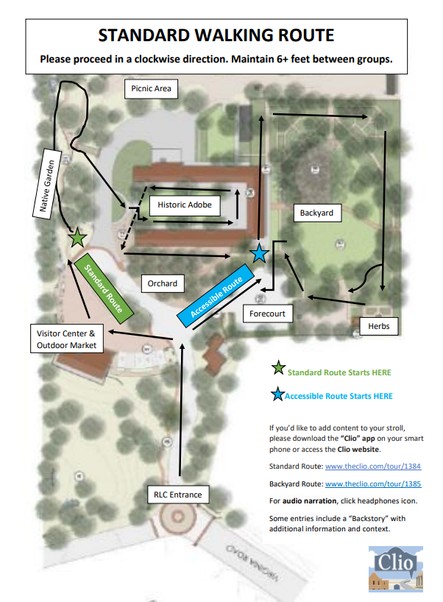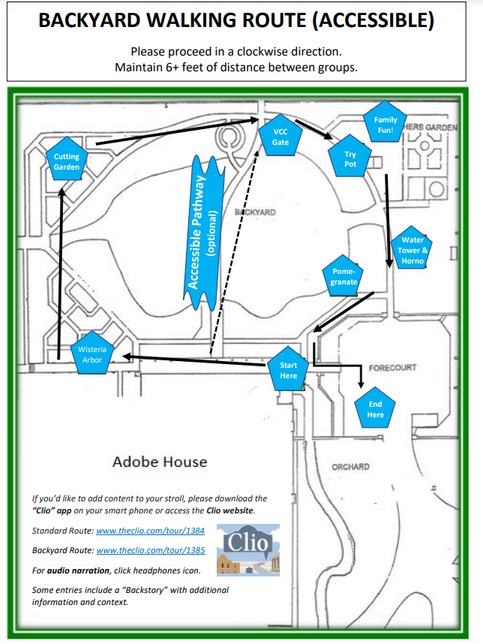Rancho Los Cerritos - Self-Paced Tour Routes
Introduction
Text-to-speech Audio
Images


Backstory and Context
Text-to-speech Audio
After building the adobe house (1844), John Temple's workers planted the site’s first formal garden. This colonial-style garden reflected his East Coast sensibility – and his adopted West Coast environs too. Temple ordered Black locust, apple, plum, and peach trees to be shipped around Cape Horn for his new garden. He also planted five Italian cypress trees and fruit trees that were common in Mexican California, including pomegranates, oranges, lemons, figs, grapes, and olives.
Flint, Bixby & Co purchased the property (1866) and installed Jotham Bixby as ranch manager. He and his family moved into the Rancho Los Cerritos adobe. Ranch workers dug a well and built a water tower with a windmill near the house to provide the family with better access to water. These improvements enabled the garden to prosper as well. The Bixbys spent many hours in the garden, as fondly recounted by Sarah Bixby Smith in her memoire, Adobe Days (1925).
After the Bixbys moved out of the adobe house (1881), they leased the property to a succession of tenants, farmers, and dairymen. Row crops replaced many of the ornamental plants in the garden and pigs and chickens had the run of the backyard. During this same period, the Bixbys also sold off most of their land for farms and towns. The Virginia Country Club bought the adjacent acreage (1919) and opened the golf course.
Jotham Bixby’s nephew, Llewellyn Bixby Sr., purchased the remaining five acres (1929) and embarked upon extensive renovations of both the house and gardens. Architect Kenneth Wing was hired to modernize the crumbling adobe, and landscape architect Ralph D. Cornell was commissioned to design and install an estate garden. Cornell was an early proponent of the use of native plants. Rather than depend on annuals, he favored trees that would provide structure and seasonal color. He also incorporated John Temple’s try pot (a pot for rendering cow fat) and Jotham Bixby’s water tower into his design.
The City of Long Beach purchased the property (1955) and has continued to maintain the site, including its historic gardens, for public recreation, education, and research.
